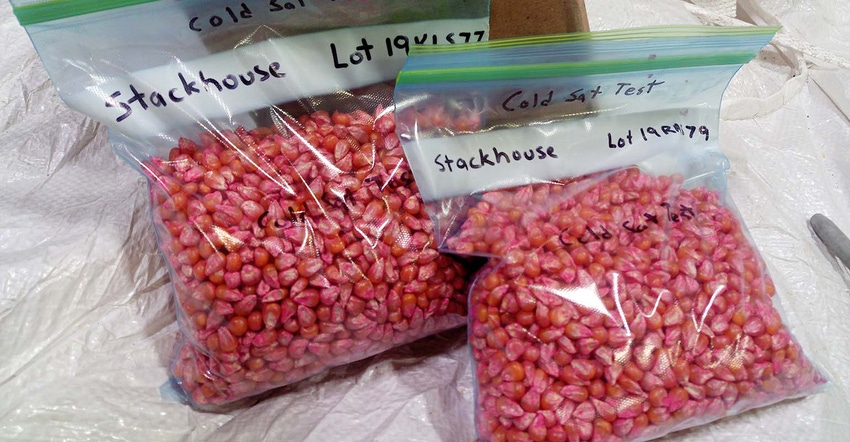April 9, 2018

If only that old saying was true… ‘If you don’t like Indiana weather, wait ten minutes’… We seem to be stuck in a cold, dreary weather pattern. Snow, wind, cold thunderstorms, and hard frost have been part of our pattern.
Originally, our ‘target date’ to start planting was April 16. Yes, that might have been a bit early as we usually start between April 20-25, but with some warmth and sunshine I would have been itching to at least get the planter in the field and tested. Maybe plant my first patch of sweet corn for a July 4th target harvest. That has all gone by the wayside, and I feel we’re looking to be closer to May 1.
Testing germination
In preparation for planting, I sent the last couple corn seed samples off to the lab to have a cold saturated germination test ran. This is a new practice to us, but we have heard it recommended several times and decided it would be worthwhile. Here is what the lab does in this test. Seeds are counted and placed in trays with soil at 100% saturation. They are left there for 5-7 days at 50 degrees before they are moved to a 73-degree warming chamber for four days.
At the end of the test the number of normal, abnormal, and dead seedlings are counted. A cold sat germ number is then reported. More or less, this test mimics a cold wet period following planting.
So, what does this mean? It’s unlikely you will return seed based on these tests (as the seal on bulk boxes was broken). However, you are given a ‘warning’ so to speak if you possess any less vigorous lots that should be planted later in the spring when weather conditions are forecast to be more favorable to even crop emergence.
One note, the cold sat germ is not the same as the 95% cold germ that is stamped on the seed tag. The cold germ test omits 100% saturation. I have heard these results may vary 30% or more. So far, most of our results have been fairly close, varying less than 10%.
In our quest for higher yields, we are looking to remove as many variables as possible. The lab fees are between $20-$30 per sample.
The opinions of the author are not necessarily those of Farm Futures or Farm Progress.
About the Author(s)
You May Also Like






